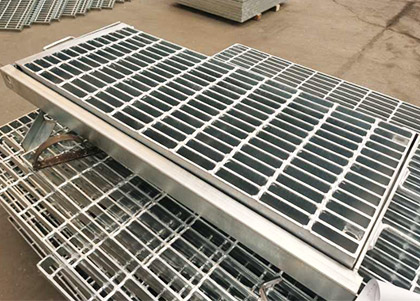Steel grating is a type of grating made of steel. It is used for different applications such as flooring, catwalks, and stair treads.
The different types of steel grating include welded steel grating, pressure-locked grating, riveted grating, swage-locked grating, and close-mesh grating.
Welded steel grating is the most commonly used type, where the bearing bars and cross bars are joined by resistance welding. It offers high strength and durability.
Pressure-locked grating is manufactured by inserting cross bars into pre-punched holes in the bearing bars and then hydraulically deforming the bars to lock them in place.
Riveted grating is known for its strength and resistance to impact and fatigue. It is constructed by riveting bearing bars into place with cross bars.
Swage-locked grating is a type of grating where the cross bars are inserted into pre-punched holes in the bearing bars and then swaged to lock them in place.

Close-mesh grating is designed with narrow spacing between bearing bars to prevent objects from falling through. It is commonly used for pedestrian traffic and small wheels.
Each type of steel grating has its own unique characteristics and is suitable for different applications based on the specific requirements of the project.
When choosing the right type of steel grating, factors such as load capacity, open area, deflection, and surface treatment need to be taken into consideration.
The load capacity of steel grating refers to the maximum weight it can support without causing deformation. It is an important factor in determining the appropriate type of grating for a particular application.
Open area is the percentage of the grating’s surface that is open space. Different types of steel grating offer varying degrees of open area, which can affect airflow, light penetration, and drainage.
Deflection is the degree to which the grating bends or flexes under load. It is important to consider deflection when determining the spacing and size of bearing bars and cross bars.
Surface treatment such as galvanization or coating can enhance the corrosion resistance and longevity of steel grating, especially in outdoor or harsh environments.
Steel grating is commonly used in industries such as oil and gas, mining, transportation, and manufacturing due to its strength, durability, and safety features.
In conclusion, understanding the different types of steel grating and their unique characteristics is essential in selecting the most suitable grating for a specific application.

